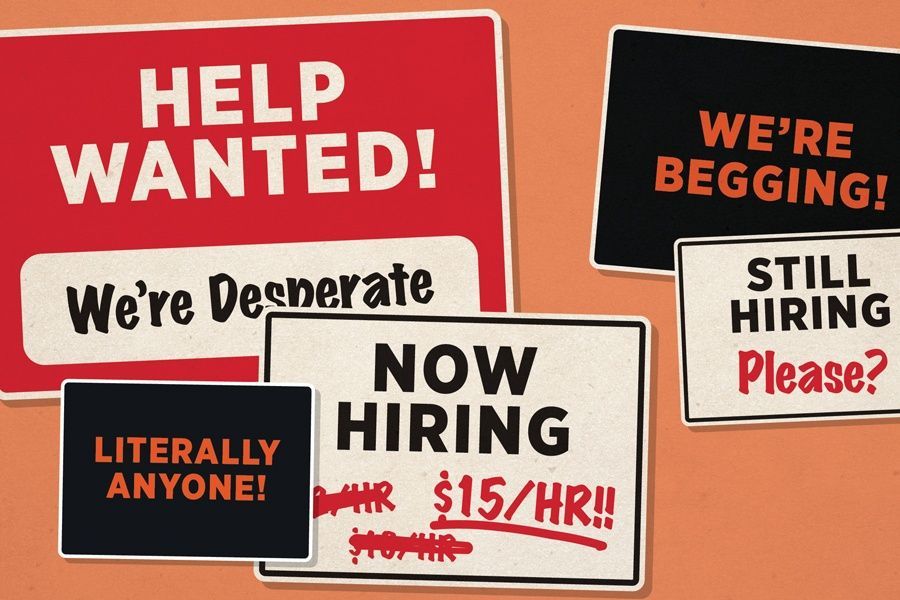Public Child Welfare’s Challenge of Lack of Staff
March 2023
Public Child Welfare’s Challenge of Lack of Staff
I have over 40 years of experience working in child welfare trying to help the public child welfare system and private non-profit providers be more successful in helping the youth that come to our attention get the services they need and to learn the knowledge, skills and tools they need to be successful citizens when they exit the system.
For years we have seen article after article and study after study that tells us we lack the qualified staff we need on both the public child welfare side and the non-profit/private child welfare side to provide the services youth in care require.
State child welfare agencies report annual turnover rates in excess of 50% and ranging upwards to 65%.
Public child welfare has a problem, yet they have for decades continued to simply say it’s a problem of bodies to do the work. Let me suggest that if what you are doing has not worked for over a decade then maybe it’s time to ask what could work because continuing to do what has not worked is the essence of insanity.
Let me suggest it’s a three-fold solution.
First, the ”system” does not use differentiated staffing. More on this later in this article.
Second, the “system” has not changed how it manages/ supervises staff. The approach that the public sector has used for decades is a compliance and punishment model.
No public child welfare agency has adopted a non-punitive standardized supervision practice model to supervising staff (aka a process other than progressive discipline).
No public child welfare system has embraced the decade of research that tell us working with staff (especially the incoming Gen Y & Z) in a nonpunitive success focused model of supervising staff is critical for them to stay (i.e decrease turnover)
It costs less money to retain staff than it does to continually try to replace staff.
Staff leave supervisors and systems that set them up for failure aka public child welfare.
The management of public child welfare is comprised mostly of Baby Boomers and Gen X who tell us the problem is the incoming Gen Y & Z who don’t have a work ethic, are lazy, just don’t want to do the work.
Here is the reality. Gen Y & Z are the incoming work force and those in management need to accept that their old ways don’t work with the younger generations. They need to stop doing business as usual (the way we have for the past decade) and ask the hard question, how do we change our system of practice to both recruit and retain a workforce comprised on Gen Y & Z.
The answer is not do a workshop on generations in the workplace. That is good knowledge, but it is not enough.
You must address the root causes of high turnover and modify the existing systems that are the root cause of that turnover.
Management must stop looking for the lowest level worker to blame and recognize that when a front-line worker makes a mistake it is the fault of poor training and/or poor supervision.
Workers don’t fail, the system fails workers. And the system then punishes the front-line worker.
This starts with senior management and HR (and if you are a unionized state then also with union reps) meeting to layout a 2-year plan to recruit and retain a Gen Y & Z workforce.
Where do you start?
Senior management must:
- Adopt a nonpunitive success-focused model of supervision and train every supervisor at every level, including senior management, on that model and require it be used. Concurrently policies, procedures, etc must be aligned with a non-punitive approach to supervision.
- Modify your new worker training to be both knowledge and skills based focused on what are the essential skills a new worker needs to be successful in their job doing both front end and ongoing training throughout the first 2 years.
- Modify the job description to accurately reflect the work to be done. The most challenging job in public child welfare is investigations. If as an agency you choose investigations to be where new workers start, then focus front end training on how to do that job. Train them later to do foster care or adoptions. Use differentiated staff where the training is targeted to the specific job not general training for all jobs. I would advocate you incentivize investigations as a promotion to get seasoned workers to do that work and with lower caseloads and results timelines.
- Build an MSW/MPC/MFCC graduate internship program that in their second-year trains those interns to do the job successfully so you create a pool of master’s level persons prepared to do the work upon graduation. Pay them a stipend to make the internship attractive.
- Modify your hiring process to “fit” with Gen Y & Z
Third, the front-end training of new workers does not adequately prepare new workers for the realities of child welfare. Front-line workers have been saying this for over a decade, yet the front-end training has not fundamentally changed. It is not academic knowledge and procedures training. It must also train the skills needed to be successful.
Then after the front-end training, the new worker gets a caseload that they cannot succeed in managing – again workers have been saying this for over a decade, yet nothing has changed.
You can do differentiated staffing so that long-term successful placements go to a staff with higher caseloads than staff dealing with new placements. You could do this by weighting placements or by separating new placements from ongoing / long term placements.
Management of public child welfare ‘s excuse is we just can’t find the folks to hire.
The reality is until management operates differently you won’t find the staff you need to hire.
I challenge any public child welfare department to open the discussion of “how do we need to change to be attractive to Gen Y & Z?"
=============================================================
LEADING FROM OUTSIDE THE BOX is a monthly newsletter for human services leaders.
Its purpose is to challenge your thinking and help you improve organizational and outcome performance.
To receive your copy free, simply email Jeff Bormaster and ask to be added to the mailing list. Feel free to share these newsletters with other human services leaders, simply include the contact information.
You can read previous issues of Leading Outside the Box at www.jeffbormasterconsulting.com/topics










